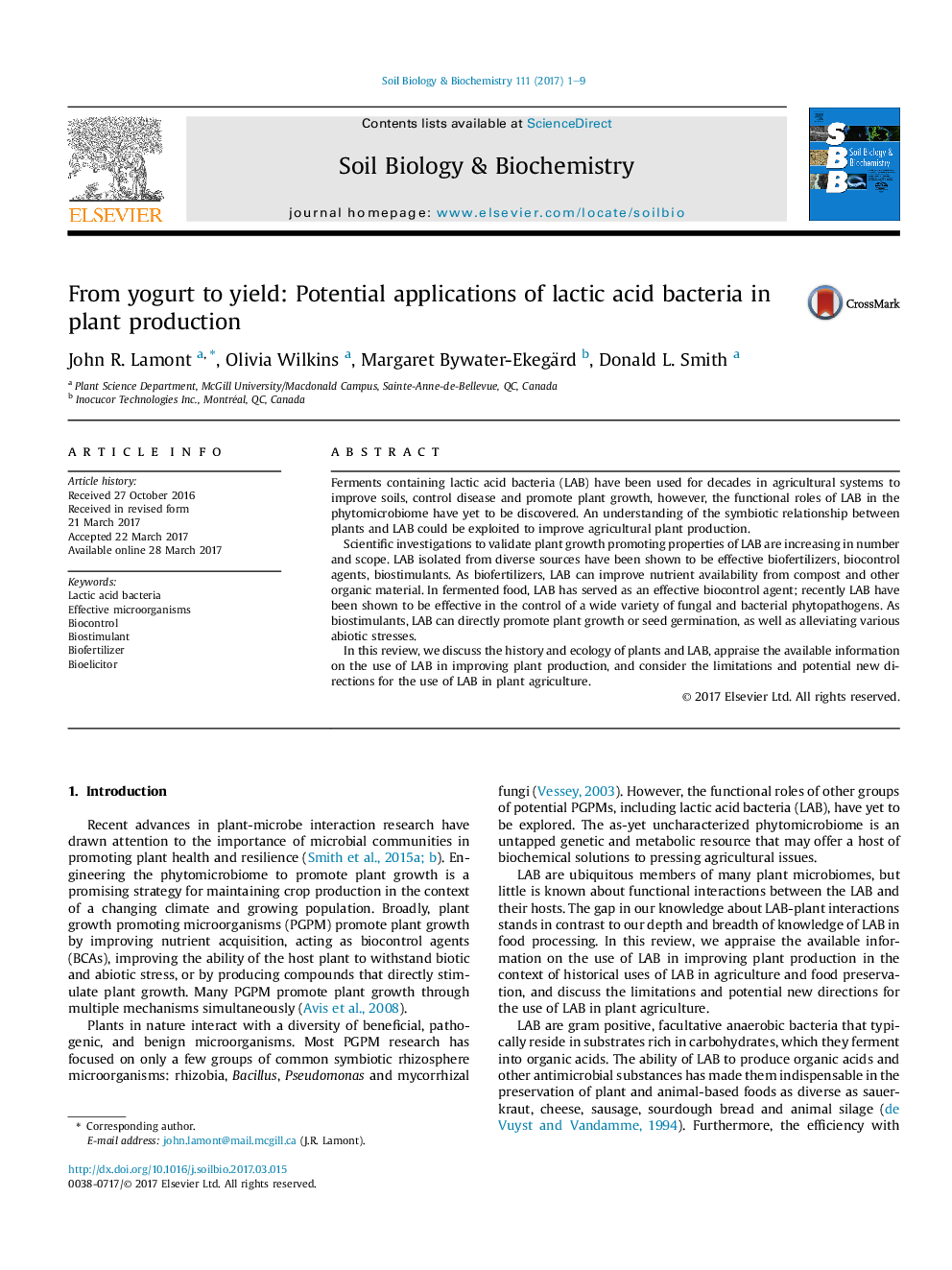| Article ID | Journal | Published Year | Pages | File Type |
|---|---|---|---|---|
| 5516279 | Soil Biology and Biochemistry | 2017 | 9 Pages |
â¢Lactic acid bacteria (LAB) have been used for decades to improve plant growth.â¢The plant - LAB relationship has yet to be fully characterized.â¢LAB can serve as biofertilizers, biocontrols, biostimulants, and bioelicitors.
Ferments containing lactic acid bacteria (LAB) have been used for decades in agricultural systems to improve soils, control disease and promote plant growth, however, the functional roles of LAB in the phytomicrobiome have yet to be discovered. An understanding of the symbiotic relationship between plants and LAB could be exploited to improve agricultural plant production.Scientific investigations to validate plant growth promoting properties of LAB are increasing in number and scope. LAB isolated from diverse sources have been shown to be effective biofertilizers, biocontrol agents, biostimulants. As biofertilizers, LAB can improve nutrient availability from compost and other organic material. In fermented food, LAB has served as an effective biocontrol agent; recently LAB have been shown to be effective in the control of a wide variety of fungal and bacterial phytopathogens. As biostimulants, LAB can directly promote plant growth or seed germination, as well as alleviating various abiotic stresses.In this review, we discuss the history and ecology of plants and LAB, appraise the available information on the use of LAB in improving plant production, and consider the limitations and potential new directions for the use of LAB in plant agriculture.
